Fabric packaging glossary: bags, totes, covers
This glossary keeps growing with time. It deals with fabric packaging (bags, totes, covers, pouches) (look for ) and printing techniques. This glossary helps you familiarize yourself with the language of the trades and to further your knowledge in this vast domain of packaging and printing.
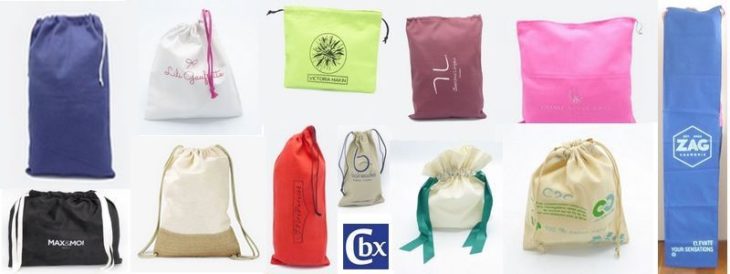
�
- «Cross» direction
- Perpendicular direction to the «machine» direction or the direction of travel. «Cross» direction is the least resistant to the tearing of paper.
- «Machine» direction
- Direction of travel of the paper or cardboard corresponding to the displacement of the roll on the paper or cardboard machine.
4
- 4-color printing
- This is a a 4-color printing process. This offset printing technique uses the 4 primary colors (Cyan, Magenta, Yellow and Black) to reproduce all colors. These 4 colors, once mixed, allow to accurately reproduce your color documents.
A
- Accessory (clothing)
- This term designates all the elements that contribute to the production and finish of a garment, complete and embellish it. These are buttons, braids, zippers, snaps, hooks...
- Accessory (Fashion)
- This term designates objects that personalize one’s clothing. These may may scarves, belts, bags, shawls, ties, wallets...
- AI (Adobe Illustrator)
-
- see vector file - The «.ai» extension is tied to the Adobe Illustrator software which offers powerful vector tools. This type of file extension (graphics, paths, etc.) The vector images do not depend on resolution and do not lose in quality when enlarged or reduced. This is the required format for quality prints. Other vector extensions exist: «.eps» and «.pdf.»
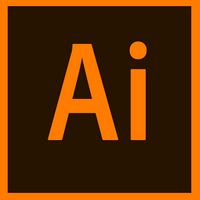
- Animated materials
- Point-of-sale display one or more elements of which are animated (by a small battery-, plug in- or solar-powered engine) to attract attention.
- Art proof approval
-
Signed consent on a machine of a printed proof before serial printing. Also used to approve the blank shape mock-up before cutting.
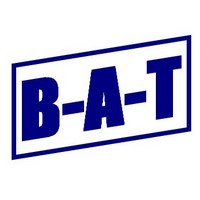
- Artificial fiber
- Artificial fiber is made from cellulose obtained from cotton seeds or wood through the appropriate chemical treatment. Continuous (rayon, viscose) or discontinuous fibers (fibranne) are thus obtained.
B
- Bleaching
- Process of whitening textile fibers and eliminating all natural impurities at the time of textile finishing.
- Burlap (jute)
-
Burlap is a plant fiber obtained from the stem of a plant (corchorus.) The burlap fiber is silky, short (2.5 mm) and resistant.
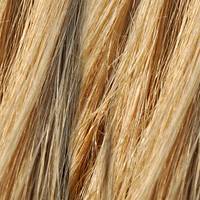
C
- Calendering
- A finishing process where the fabric is passed between calender rollers at high temperatures. These rollers press the fabric to give it a glossy aspect. If the rolls are 3D, designs and special effects such as marbling or moire, embossing.
- Cellulose (fabric)
- It is a fibrous material of plant origin such as cotton, linen, burlap and hemp… which can also be man-made from artificial fibers of plant origin such as viscose, acetate and triacetate.
- Cloths
- Generic term used to describe fabrics used for clothing or furnishing.
- CMYK or CMJN
-
Designates the 3 primary colors and black in 4-color printing: CMYK = Cyan, Magenta, Yellow and K for Black in English and CMJN = Cyan, Magenta, Jaune and Noir in French.
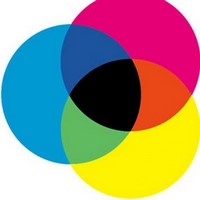
- Collecting
- Collecting consists of the first phase in the recycling cycle as what hasn’t been collected may not be recycled. Though most paper and cardboard are «recyclabe,» not all types may be collected for reasons tied to their destruction (sanitary and household products...,) to their immobilization due to their use (books…,) thto their eventual contamination or their too wide geographical dispersion.
- Color chart
-
A systematic arrangement of colors or papers ( or cardboards) to choose a tint or a paper (or cardboard) quality; Pantone® color chart for example.
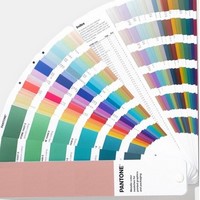
- Cotton
-
Plant fiber. This is the soft fibrous substance that surrounds the seeds of the cotton plant. Cotton retains humidity (8.5% of its weight in water.) Its heat-retaining capacity is average but it has a rather good thermal conductivity. Its main characteristic is its length which varies from 10 to 50 cm. The longest cotton fibers are the thinnest. Its fabric finish is soft.
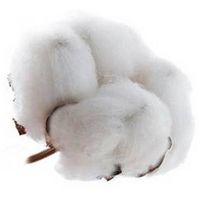
- Cromalin®
-
Quick photoengraving proof obtained through photography. This process was developed by the Dupont de Nemours company. Cromalin is used to approve a final design. This name has come to mean any proof used to approve a draft before printing.
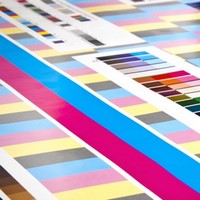
- CTP
- Computer To Plate. In offset printing, it is an imaging technology which transfers a digital image directly onto a printing plate or roll, bypassing the photographic film step.
- CTS
- Computer To Screen. It is the equivalent of CTP in screenprinting.
- Cutter
- Paper cutter having the name of its inventor in French (Massicot.)
D
- Deinking
- Procedure to remove ink from paperfibers. This process consists of detaching ink particles from paper thanks to a mechanical action and the use of soap to create bubbles. By attaching themselves to the ink particles, these bubbles float to the surface and are then collected from the cell. Due to their properties, these deinking froths can still be used as fertilizer in agriculture and sylviculture, soil conditioning or yet other uses (particle boards, embankments...)
- Denim
-
A tight, washable and very strong cotton fabric made using a twill weave.
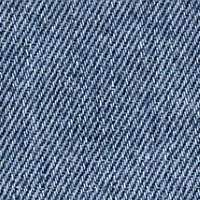
- Digital printing
- It is a direct reproduction process from digital data which uses neither printing plates (offset printing) nor screens (screen printing.) It is a quick quality printing process for very small or large quantities of different models with minimal make-ready times. Its lower set-up costs allow for small-quantity competitive prices.
- Display rack
- Sales stand accessible from all sides.
- Display stand
- A display stand is a flat or voluminous tool installed for a given period of time to display a brand and its products at a trade fair or exhibition.
- DPI (dots per inch)
- - see PPP – DPI is Dots Per Inch in English. It is the number of dots per square inch in an image. The more dots per inch, the better the definition of the image, the higher the resolution.
- DTP / CAD
- Desktop Publishing / Computer Aided Design
- DTP / CAD
- Processing or creating 2D and 3D photographic or design work with the assistance of a computer.
- Dye
- The process of coloring textile fibers before weaving or directly coloring a fabric with the use of dyes.
E
- Ecru (unbleached)
- Ecru is the natural color of a fabric that has undergone no transformation (washing, bleaching, dyeing.)
- Embroidery
-
Decorative fabric art which adds flat or 3-D designs made of threads using needle- or crochet work.
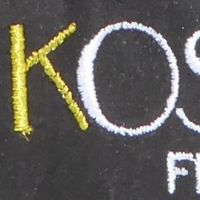
- EPS (Encapsulated PostScript)
-
- see vector file – Document file format (graphic, trace, etc.) from Photoshop® or Illustrator® which can contain vector and bitmap elements. The EPS format keeps the vector characteristics of the graphics file. It allows for quality printing, much like the «.ai» and «.pdf» formats.
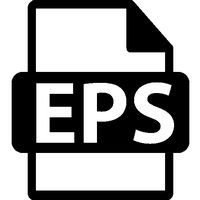
- EU ecolabel
-
The European Union Ecolabel is a label of environmental excellence that is awarded to products and services meeting high environmental standards throughout their life-cycle. It promotes buying eco-friendly products.
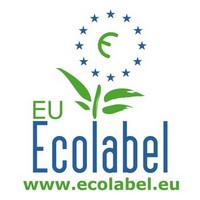
- Executable document
- Original used for photoengraving reproduction before printing.
F
- Fabric
- A soft and strong surface made of a regular assembly of warp and weft threads. This assembly is done on a machine called a loom.
- Fiber
- Fiber is a slender and elongated natural or synthetic filament. There are three types of fibers: natural, artificial and synthetic. Please note: artificial and synthetic fibers have specific resistant, rotproof and lightness characteristics: they are highly washable and do not wrinkle. Their feel today is close to that of natural materials.
- Finishing
- - see finish – This term designates the chemical and mechanical treatments that are applied to a raw fabric in order to give it its final aspect.
- Finishing
- Process or processes that complete the manufacture of a product.
- Fire resistance
-
In France, there is a rating scale with 5 categories that define the fire resistance of materials:
- M0: non-combustible
- M1: combustible (non-flammable)
- M2: combustible (flame retardant)
- M3: combustible (moderately flammable)
- M4: combustible (highly flammable)
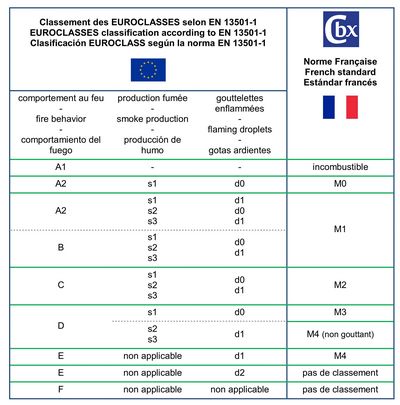
- Fleece
- Thick cotton or polyester padding used for armchairs and to line comforters, curtains, etc.
- Flexographic printing
- This relief-printing technique uses a positive mirrored master of an image as a 3D relief in a photopolymer material. It enables to print sheet by sheet or in rolls. Flexogaphic printing allows for high-speed long run prints and large quantities.
- Flexography
- - see Flexographic printing – Relief printing method using photopolymer plates. This is a direct-transfer relief print; it is mainly used in the corrugated cardboard industry. Its main advantage is that this method allows to print on most materials. The inks used are water-based.
- Fogra®
-
It is the main German organization for graphic industry standards which, with EFI (Rip Best,) set up an installer proofing system certification procedure. This digital and contractual proof guarantees the final quality of a document’s press print. It meets the ISO 12.647-2 international standard which corresponds to the 39L Fogra standard. This is the offset printing standard.
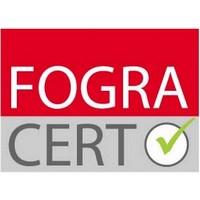
- Format
-
Designates the width and length of a sheet of paper.
- Italian-style format (or landscape format): format where the width is the greater measure.
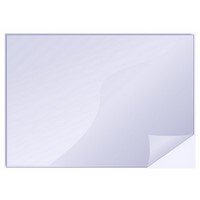
- French-style format (or portrait format): format where the length is the greater measure.
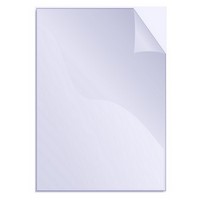
- Italian-style format (or landscape format): format where the width is the greater measure.
- Four-color process printing (CMYK printing)
- Printing process using the 3 primary colors + black, applied in separate layers and used for offset and screen printing.
- Front – Back
- The front is the visible side of the fabric; it is the side with the best aspect. The back is the hidden side of the fabric; it is the side opposite to the front.
- FSC
-
Created in 1993, the Forest Stewardship Council (FSC) is an ecolabel that ensures eco-friendly responsible forestry management. An FSC-labeled product means that the wood it contains was produced under sustainable forest management conditions. https://fsc.org/en
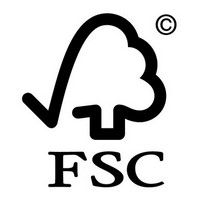
G
- Gauze
-
Gauze is a light, transparent and openwork fabric made from threads of cotton, linen, wool, silk...

- Gore-tex®
-
It is a highly waterproof and breathable synthetic fabric.

- GOTS
-
The world standard for organic fabrics (GOTS -Global Organic Textile Standard) dates back to 2002. This standard was created at the Düsseldorf (Germany) Intercot conference by organic cotton farming, textile industry and consumer representatives as well as standard and certification agencies. It is a world standard today for textiles made from organic fibers. https://global-standard.org/
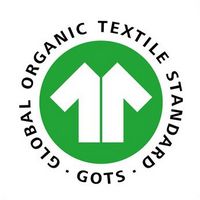
- Grammage
- Weight per surface area of paper or cardboard. It is measured as grams per square meter (ex.: 80g/m².) A 300 g sheet of paper weighs 300 g per m². The higher the weight, the more rigid the paper/cardboard.
- Gravure (rotogravure)
- – See Gravure Printing - This is a “hollow” direct printing process. Hollow previews composed of many small cavities, are engraved on a copper cylinder and filled with ink. Printing machines are rotary presses that print very quickly. This method is suitable for large runs due to high preparation costs and low unit costs.
- Gravure Printing
-
The principle of the gravure is the impression in hollow which uses a cylinder engraved in hollow with alveoli of greater or lesser depths. The intensity of the ink projected on the substrate will depend on this depth. It is a technique that gives a very high quality rendering but is reserved for very very large prints.
- Green dot
-
The green dot is the trademarked symbol of a European network or industry-funded systems for recycling the packaging materials of consumer goods. It was initiated by Germany (Duale System Deutschland GmbH) and then taken over in France (Eco-Emballages SA and Adelphe). This acronym reflects the implementation of a recovery system adapted to the diversity of domestic packaging deposits.
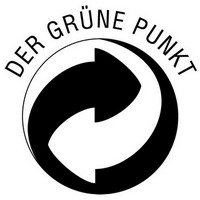
- Grouping
- Combining merchandise for shipping purposes.
H
- Hemp
-
Plant fiber. The fiber is extracted from the stem of the Cannabis sativa plant. This fiber is not very permeable to air and water and burns quickly without leaving any molten bead. It is mainly used today in rope making and weaving. In plumbing, it is the thread sealant that is wrapped around a joint.
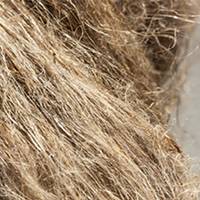
- Hot foil stamping
-
- see hot stamping – Hot foil stamping consists in transferring a film covered with metal pigments (gold, silver or other) onto a product. This is the only process capable of restoring the metallic aspect of gold and silver.
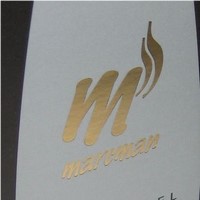
- Hot stamping
-
- see foil stamping – Hot stamping is a printing method of relief printing using a specific tool – the gilding iron – where a, most-often, gold or silver metal foil is transferred to a compatible surface such as compact cardboard at high temperatures. Different colored foils may be used today. This stamping is suited for small surface areas to highlight a logo or particular image thanks to its high shine.

I
- ISO – International Organization for Standardization
-
Founded in 1947, it develops and publishes industrial and commercial international standards called «ISO standards.» The most widely-known standards are the ISO 9001 which deals with quality management, the ISO 14000 which deals with environmental management and the ISO/IEC 27001 which deals with information security management.
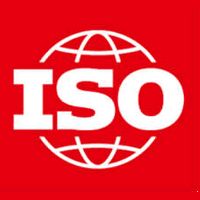
J
- Jacquard
- Weaving technique which allows for complex woven-in designs with different color threads.
K
- Kakemono
- A light, printed advertising support hung inside a shop. Its high and narrow format differentiates this support from the banner or the streamer which are wider than they are high.
L
- Line (printing)
- Document having a single pure color tone and a pure white excluding all color gradients.
- Linen
-
Linen is a plant fiber extracted from the stem of the linum. It absorbs water and lets it evaporate quickly as well as being a good heat conductor. It is 15 to 20 cm long. Linen fiber is very fine, shiny and silky.
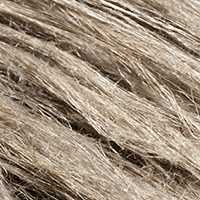
L
- lining
- This is the fabric used to perfectly line the inside of a bag.
M
- Mandrel
- A tube with an axial hole for a spindle. For paper products and fabric, the mandrel is most often made of cardboard.
- Manufacturing tolerance
- - see Waste – Manufacturing tolerance is an important concept to be aware of. To make custom and/or personalized packaging, a greater product quantity than the one ordered is always planned to account for the waste. If there is a lot of waste, less packaging will be produced and if the waste is low, there will be more product. This amount of produced packaging is thus the exact quantity that will be shipped and billed to the customer. The manufacturing tolerance in our industry is 10% more or less.
- Mechanization
- Automatic conditioning technique more and more frequently used for product bundling.
- Merchandising
- Technique used to optimize sales thanks to product implementation studies: appealing, attractive and informative product presentation.
- Metamerism
- Is said of two colors that, though they appear similar under a certain light, are different under another.
- Microfiber
-
This is very thin and light synthetic textile fiber. Microfiber fabrics are exceptionally soft, supple, light and resistant.
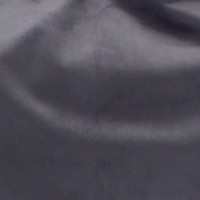
- Migration
- Passage from a substance between 2 different matters in contact, particularly at the container-content interaction
- Mobile
- Composition of cardboard or other light material, connected with strings and hung on the ceiling to move freely in the air.
- Möbius loop
-
- see recyclable – In most cases, MÖBIUS STRIP means the product is recyclable. However, it can also mean the product contains recycled materials. In this case, the symbol is accompanied by the word «recycled.» This logo isn’t a sorting indication for recycling.
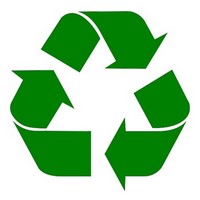
- Moiréing
- Blurring of a reproduced image by creating geometric motifs due to different warp/weft or weaving axis orientation.
- Multipose
-
- see Poses - Reproduction of many identical formats on a same fabric surface delineated by its length and width.
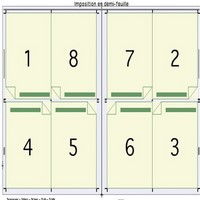
- Muslin
-
It is a light and transparent fabric made from carded cotton threads.
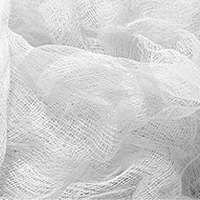
N
- Natural fiber
- Plant fiber has two origins: plant or animal. Plant fiber is mainly made of cellulose and extracted from either seeds (cotton, kapok,) stems and roots (linen, hemp, jute,) leaves (abaca, sisal) or sap (rubber.) Animal fiber is mostly made of proteins and comes from certain mammals’hair (alpaca, angora, cashmere, wool, mohair, vicuna…) or silk made by silkworms.
- Non-woven (or unwoven)
-
Non-woven fabric is obtained by mechanical, chemical or thermal bonding of textile fibers deposited in a random manner. One of the most common fabrication modes is the compression of fibers with a bonding agent.
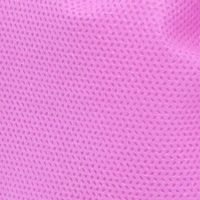
O
- Offset
- This is the most common procedure to print on flat cardboard. It is an indirect priting method that uses metal plates produced phtographically from negatives. These plates are inked and the images are transferred to a rubber cylinder (blanket) and then to the printing surface (paper.)
- Offset printing
- Offset printing is a priting technique in which the inked image is transferred (or «offset») from a metal plate to a rubber blanket and then to the printing surface. The plate has been previously treated to only receive ink in the printable part and there is a plate for each base color (cyan, magenta, yellow and black.)
- Organic cotton
- - see GOTS certification – Cotton that is grown without using any chemicals but with organic fertilizers. Its traceability, from crop to final fabric, is given by the GOTS certification.
- Organza
- Though it was traditionally made from silk, organza today is synthetic. It is very thin, shiny and rigid.
- Overprinting
- Consists in adding complementary text after printing. Example: personalization by subsequently printing the name and address of the distributor.
- Ozalid®
- Ozalid® became a registered trademark in printing to designate proofing made by light exposure.
P
- Packaging
- Object used to temporarily wrap or contain one or more products during their handling, transportation, storage or presentation in order to protect them and facilitate these steps. In a more general sense, this term is used to list the ways and methods used to carry out the aforementioned operations.
- Packaging
- Packaging integrates the marketing and communication strategy of a company. It is printed, includes choices in material and form as well as graphics, colors and fonts, to meet aesthetic standards.
- Pantone®
-
International standardized color chart developed from pre-established color mixes. Standardized and international color reproduction system for printing inks, colored paper, markers, etc.

- PDF (Portable Document Format)
-
 - see vector file – The PDF format, created by Adobe like the AI format, retains text and image document formatting. This format meets professional printing industry standards (high resolution, colorimetric information, crop marks, …) It allows for quality printing, much like «.ai» and «.eps» file formats.
- see vector file – The PDF format, created by Adobe like the AI format, retains text and image document formatting. This format meets professional printing industry standards (high resolution, colorimetric information, crop marks, …) It allows for quality printing, much like «.ai» and «.eps» file formats.
- PEFC
-
Founded in 1999, «The Programme for the Endorsement of Forest Certification» is an international, non-profit, non-governmental organization which promotes sustainable forest management through independent third party certification. A wood or wood-based product having this certification is guaranteed to be made of at least 70% wood from sustainable forests.https://www.pefc.org/
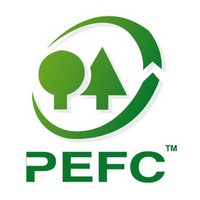
- Plain weave
- This is the most basic and ancient weave and the most sturdy/durable. The weft threads cross over and under each warp-thread. These fabrics have no front or back.
- Plain weave
-
One of the three fundamental types of textile weaves alongside satin and twill weave, plain weave is the oldest and the simplest. Plain weave fabrics have no right or wrong side and all fibers may be woven in a plain weave.
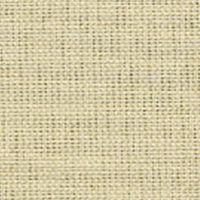
- Plastics
-
Recyclable or recycled, plastics are classified according to the following nomenclature: 1 – PET or PETE, Polyethylene terephthalate; 2 = HDPE, High-density polyethylene; 3 = PVC, Polyvinyl chloride; 4 = LDPE, Low-density polyethylene; 5= PP, Polypropylene; 6 = PS; Polystyrene; 7 = other, other plastics.
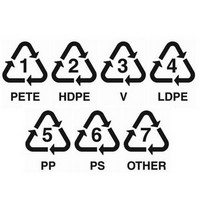
- Plotting
- Printing which separates the colors for the making of an offset plate. It consists of making films or high-definition bromide prints from a computer disk, with the help of an imagesetter.
P
- point of sale information
- It allows to guide, orient and inform consumers on the advantages of a product in order to better sell it. Point of sale information uses the same media as point of sale advertising: advertising banners, totems, easels, interactive terminals, etc.
P
- Polyester
- Synthetic chemical fiber. Chemical fiber in which the fibreous substance is a long chain of composed synthetic polymer. The fibers are produced as filaments, short fibers and esters. This fiber has an excellent chemical and mechanical resistance and is resistant to shrinking and stretching.
- POS display
- Acronym for Point Of Sale display. This term includes all sales promotion materials (free standing display units (FSDU,) countertop display units, stands, standees, totem displays, etc.) used to promote a product, brand or special offers.
- Pose
- - see Multi-pose – One or more instances printed on a same format sheet of paper.
- PPP (point par pouce)
- - see DPI – PPP or Point Par Pouce in French. It is the number of dots per square inch in an image.
- Primary colors
- There are 3 primary colors (Cyan – Yellow – Magenta) that are at the extremities and the center of the solar spectrum. Much like white, they cannot be obtained by mixing other colors. However, black is obtained by mixing these 3 primary colors together.
- Primer
- This is the fabric finishing. It can make it smoother, waterproof, stain- or fire-resistant, shiny, etc.
- Print registration
- Precise setup for each printed shape to obtain an exact color alignment.
- Printing
- Process of impressing a drawing, image or text onto a support (paper, cardboard, fabric.) There are different printing methods but the main ones used in packaging are: offset, screen printing, digital, flexography and gravure printing.
R
- Raster (printing)
-
Number of dots per cm². Gray value expressed by relative surface area printed. Screen angles: angles at which the halftones of a separated color are made to output to a lithographic film. An incorrect angle screen may lead to moiré patterns.
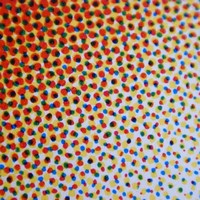
- Rattail (type of cord)
-
This is a very tightly-woven and thighly-threaded thin cord.

- Recyclable
- Though most paper and cardboard are recyclabe, all types are not necessarily recycled. To be «recyclable,» a product must be fit for reuse in a production circuit within a complete recycling process.
- Recycled
- Recycled paper or cardboard is manufactured from collected waste paper (FCR.) According to the Association des Producteurs et Utilisateurs de papiers-cartons Recyclés (APUR, http://www.apur-papiersrecycles.com,) a paper or cardboard item is said to be recycled when it contains at least %50 of waste fibers.
- Recycling
- The recycling of paper- and cardboard-based waste products (packaging, printed press, newspapers, etc.) is the reintroduction of these items in the paper-cardboard industry’s production cycle. Internal recycling is the reuse in a manufacturing process of materials that are a waste product of that process: similar products are produced once again, such as cardboard boxes, printed press, newspapers, etc.
- Reprography
- Photocopy of an original paper document.
- Reps
-
Weaving derived from canvas with fine longitudinal ribs across the front and back of the woven fabric.
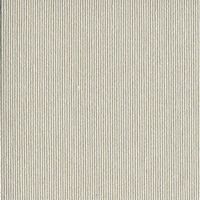
- Resolution
- - see DPI – The resolution of a document or digital image file is expressed in DPI (Dots Per Inch.) A good resolution (300 DPI minimum) is required to obtain a good printing quality.
- RESY
-
For Recycling System. This is a private, German label. This labels guarantees the packaging respects manufacturing criteria and is recyclable. The logo is specific to cardboard and this organization. Only member companies are allowed to exhibit this logo on their products.
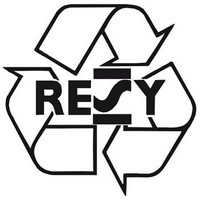
- RGB / RVB
- In English, Red, Green, Blue and in French, Rouge, Vert, Bleu.
- Ribbon
-
This is a varyingly thin strip of fabric. We use satin or cotton ribbon for bags.
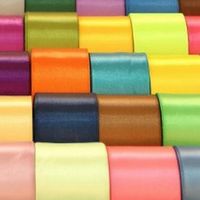
- Rivet
-
It may be made of metal or plastic and is often ring-shaped. It is placed in a hole through another material. The rivet is used to reinforce the hole or to allow a cord, lace, ribbon, etc. to go through it.
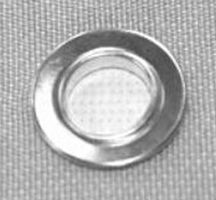
- Roll (fabric)
-
Length of fabric wrapped around a tube.
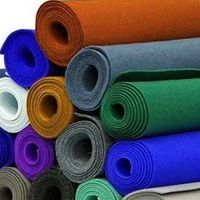
- Roll (paper)
-
This is a length of fabric or paper rolled up to form a cylinder.
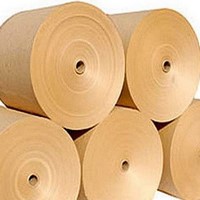
S
- Sales order delivery allowances
- These allowances determine the minimum and/or maximum amount (unders or overs) that are allowed to be delivered in comparison with the ordered quantity. As long as they are within the tolerated standards, the client must accept them.
- Satin
-
One of the three fundamental types of textile weaves alongside plain weave and twill weave. It is a resistant fabric with invisible weft threads. The front offers a smooth and shiny finish and the back is mat.
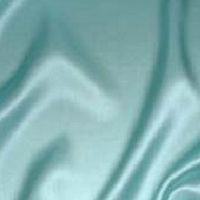
- Satin weave
- This is a particular weave without a visible weft because the crossing points between the warp and weft threads are hidden to provide a smooth, even and shiny aspect on the front and matte on the back.
- Screen for screen printing
- Printing form for silk-screening made with a polyester fabric of 80 to 200 mesh/cm , tightly stretched on a metal frame.
- Screen printing
- This printing method is based on a stencil technique. It uses a tight mesh screen, such as silk, stretched over a frame. This screen is coated in a photosensitive emulsion before being exposed to light. This hardens the emulsion in the exposed areas but leaves the unexposed parts soft. The ink will pass through the soft parts onto the support to be printed.
- Screen printing
- Printing technique which uses mesh screens between the ink and the printed support. This technique allows to print on bigger and thicker supports than Offset printing. It also enables one to print on supports other than paper (fabrics, plastics, cardboards, adhesive…)
- Sealing
- This seal is as hermetic as possible, made cold or hot. This technique is growing, thanks in part to the use of ultrasounds.
- Secondary colors
-
Secondary colors are obtained by mixing two primary colors together:
- Green = cyan + yellow
- Orange = magenta + yellow
- Purple = magenta + cyan
- Sharping
- All operations including cutting, shelling, folding, gluing, installation of accessories, etc.
- Silk
-
Animal fiber whose thread is obtained by reeling the cocoon made by the larva of the Bombyx Mori domestic silk moth. This thin, elastic and soft thread may range in length from 700 to 1200 meters: it is white and lustrous.
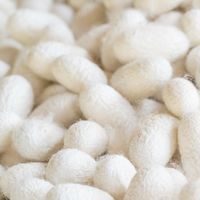
- Sleeve
- A cover with extremities that are not sewn.
- Sleeve
- Retractable plastic sleeve used to display one or more products at the same time, or to serve as tamper-evident seals.
- Solid color
- Area – often large in size – dyed to one same and homogeneous color, without a weft, in order to obtain a uniform dye
- Spinning
- It is the transformation of fiber to produce yarn.
- Staining
- Defect due to the accidental transfer of ink particles on the back of a sheet of paper from the front of the previous sheet.
- Synthetic fiber
- Synthetic fiber is entirely made from chemical components derived from oil. Some names: polyamide, polyester, acrylic, chlorofiber.
T
- Textile
- All fabrics obtained by weaving.
- To hem, A hem
- To hem a fabric is to turn an edge under – called a hem - and sew with stitches as invisible as possible from the front of the fabric. It keeps the fabric from fraying and must be invisible.
- To line
- Sewing a fabric (lining) inside a bag to give it thickness, a high-end or luxury feel and for prized articles such as champagne or designer shoes.
- Triman (France)
-
For the French market, the "triman" pictogram is mandatory on all products covered by a sorting notice.
The French AGEC law (anti-waste circular economy law), in its application decree no. 2021-385 of 29 June 2021, defines the use of the "triman" sign and "sorting instructions".
 The symbolism of the "triman" is as follows: the human silhouette represents the citizen gesture, the three arrows the sorting and the circular arrow the recycling. Here, the paving stone of the sorting instructions indicates that a pouch is recycled either in a textile container or given to a charity.
The symbolism of the "triman" is as follows: the human silhouette represents the citizen gesture, the three arrows the sorting and the circular arrow the recycling. Here, the paving stone of the sorting instructions indicates that a pouch is recycled either in a textile container or given to a charity.
- Tuning (equipment)
- All adjusting (steps and time)necessary for precise functioning of a piece of equipment.
- Twill
-
One of the three fundamental types of textile weaves alongside satin and plain weave. It is characterized by a pattern of diagonal, parallel ribs on the front and a plain aspect on the back.
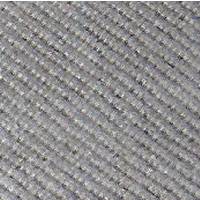
- Twill weave
- The weft-thread goes under a warp-thread, then above 3 others by offsetting by 1 thread each time, giving it its diagonal rib pattern on the front.
V
- Vector file
- see Ai – see EPS – see PDF – A vector file guarantees printed image quality because it does not depend on resolution and doesn’t lose any of its properties when enlarged or reduced. Vector files have «.ai» «.eps» and «.pdf» extensions. This type of file is required and indispensable for quality printing.
- Viscose
- Synthetic fiber made from cellulose, woven alone or with other synthetic fibers. This fiber is used to produce highly comfortable fabrics. Cellophane, rayon and fibranne are made from viscose.
- Voile
-
A light, thin fabric made of cotton, viscose or silk.
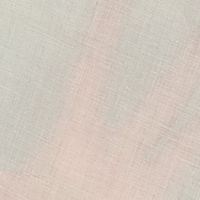
W
- Warp and weft
-
The warp threads are the lengthwise threads on the fabric loom. These threads are held stationary. The weft threads are woven in the width of the fabric, perpendicular to the warp threads. They are threaded over and under the warp threads. This results in what is called a weave.
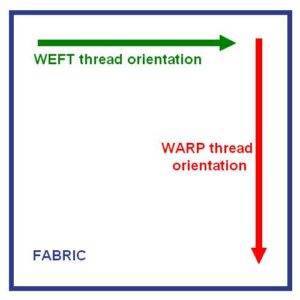
- Warp thread – weft thread
- - see Warp and Weft -
- Waste
- - see Manufacturing tolerance - Non-marketable manufacturing fraction required to set up the machines. Thus the notion of tolerance for the amount of manufactured packaging. If the waste is very low, the quantity of manufactured packagings can be superior to the ordered quantity and vice-versa if the waste is high.
- Weave
- Designates the type of weave, in other words the way the warp and weft threads are crossed. There are 3 basic weaving patterns: plain (canvas,) twill and satin.
- Weaving
- – see Weave -
- Wedging (materials)
-
These are used to secure an object in its packaging in a given position. We use foam peanuts, air bubble wrap, wood wool, shredded paper...
foam peanuts air bubble wrap wood fiber paper fiber 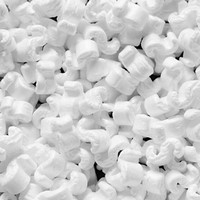
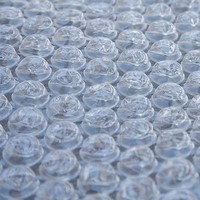
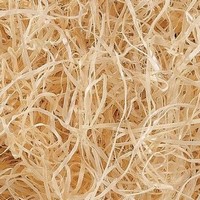
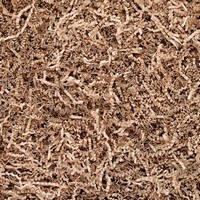
- Weft (fabric)
- Threads which, with the warp threads, are used to weave fabric. These are the threads parallel to the width of a piece of fabric. See warp and weft.
- Width
- Width of a roll of paper, cardboard or fabric (bolt.) This word also designates the workable width of a machine (paper machine, corrugator, printer, cutting table.)
Y
- Yardage
- Quantity of fabric necessary to create something.
- Yarn
- Textile yarn is the result of spinning. The threads are worked, intertwined with the help of a loom to obtain a fabric. The yarn is a single-twisted (a single and unique yarn with no twist) or double-twiwted (interlacing of at least two threads together to obtain a single yarn.)
